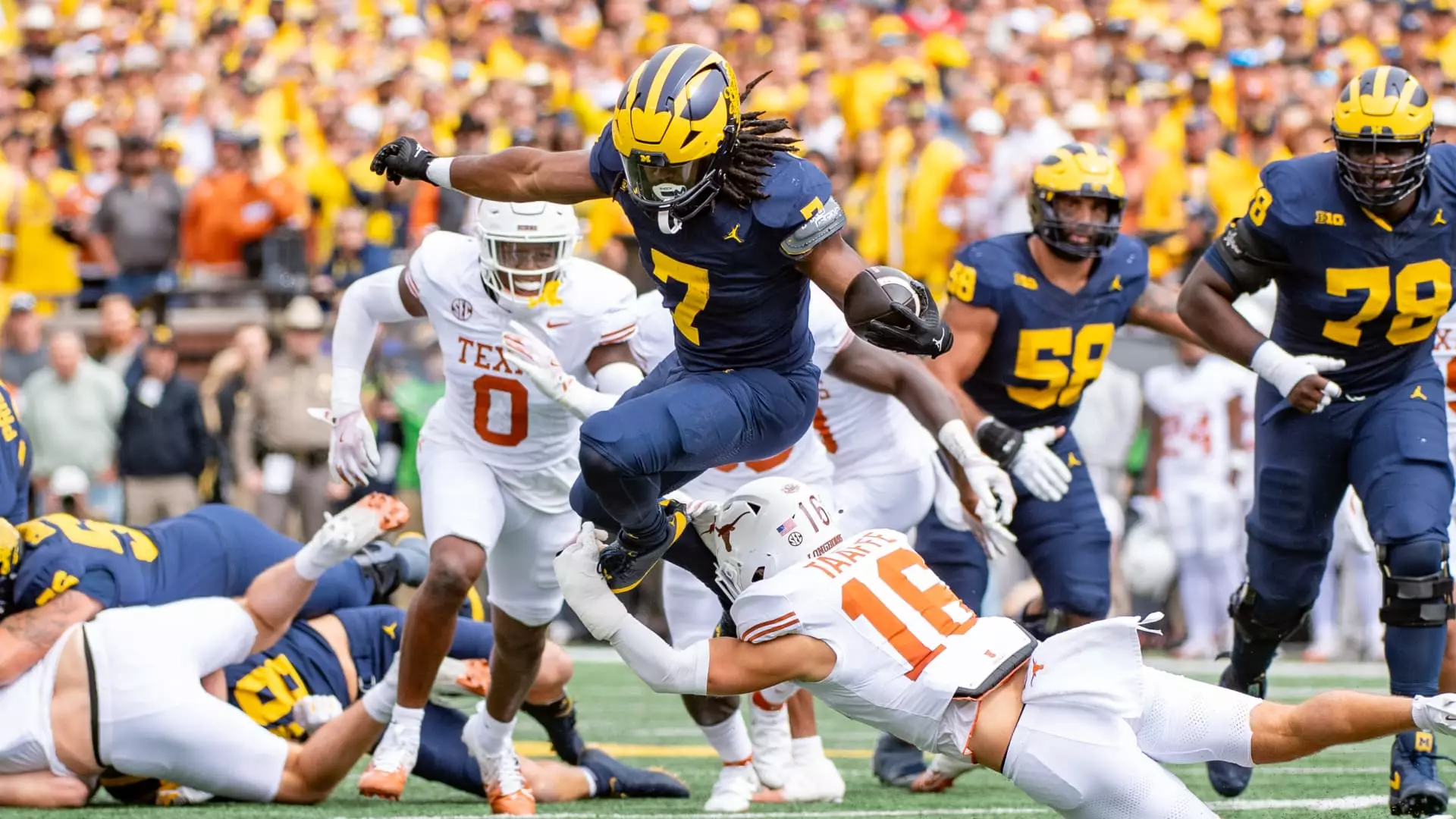The landscape of college football broadcasting has undergone a significant metamorphosis with the introduction of the expanded College Football Playoff (CFP) format. This transition to a 12-team playoff system not only enriches the competitive environment for teams and fans but has also substantially shifted the dynamics for media companies, particularly Disney. As sports viewership trends evolve, the stakes climb higher—not just for the teams vying for championship glory but also for networks and advertisers keen to tap into a renewed fervor among fans.
The inaugural season of the 12-team playoff format has generated a buzz not seen since 2016, pushing Disney’s networks—including ABC, ESPN, and ESPN2—toward record-breaking ratings. With the ability to showcase a broader array of teams competing for a coveted spot in the playoff, fans from multiple universities find themselves more invested than ever. This surge in viewership can lead to higher engagement rates, especially during the pivotal moments of the season, like Thanksgiving weekend, which historically produces notable rivalries. The CEO of EDO, Kevin Krim, highlighted the correlation between these intensified matchups and ad engagement, revealing that the stakes have fostered an environment where viewers are more connected to both the games and the advertisements they encounter.
Disney’s ability to attract more eyes to its broadcasts has manifested in marked improvements in commercial engagement metrics. Advertisements aired during college football games on its networks reportedly enjoy an 11% higher engagement than the average across competing broadcasts. The combination of compelling matchups and a dedicated audience enhances the value of commercial slots, rendering them not just spots to promote products, but platforms for meaningful consumer interaction. Particularly favored brands during these broadcasts include consumer goods like Jimmy Dean, and restaurants such as Popeyes. Such clear metrics signal a shift towards a more lucrative and effective advertising environment suited to the unique properties of live sports broadcasting.
In an age where traditional media faces challenges from dwindling pay-TV subscriptions and the rise of streaming platforms, live sports continue to serve as a critical asset. The guaranteed viewership that college football provides allows networks like Disney to maintain strong ad pricing and to effectively sell commercial space, often leading to sell-outs well in advance of high-stakes games. Jim Minnich, a senior vice president at Disney, noted that there has been a significant demand for ad renewals, with advertisers eager to secure their spots even years in advance.
The adaptability of Disney and other media companies rests heavily on their ability to respond to viewing habits and advertising needs. Despite the fluctuating landscape, college football proves to be a resilient genre, generating substantial viewership even amid industry unpredictability. Notably, many media companies, including Warner Bros. Discovery and Paramount’s CBS Sports, are making strategic investments in college football broadcasting rights, underscoring its importance in their programming strategies.
The financial stakes tied to college football are monumental. Disney’s decision to invest approximately $300 million annually over ten years for SEC broadcasting rights illustrates the potential profitability associated with college sports. Furthermore, the $7.8 billion contract ESPN inked to manage the College Football Playoff illustrates the value of these media rights in a competitive landscape.
The magnitude of college football also puts it right behind the NFL in terms of viewership and advertising clout, further solidifying its status in American sports culture. As advertisers look to capitalize on large, engaged audiences, the demand for college football content will continue to rise, potentially setting a precedent for the future of sports broadcasting.
The introduction of the 12-team College Football Playoff format not only enriches the games but profoundly shapes media dynamics and advertising strategies. With heightened engagement levels cutting across various metrics, advertisers find a golden opportunity to connect with consumers. For Disney and other media companies, the implications of the revamped playoff format present a wealth of opportunities amid significant challenges faced in the broader media landscape. As college football continues to thrive, the collaborative threads between sports, media, and advertising will likely only weave tighter, forging new pathways for profitability and engagement.

